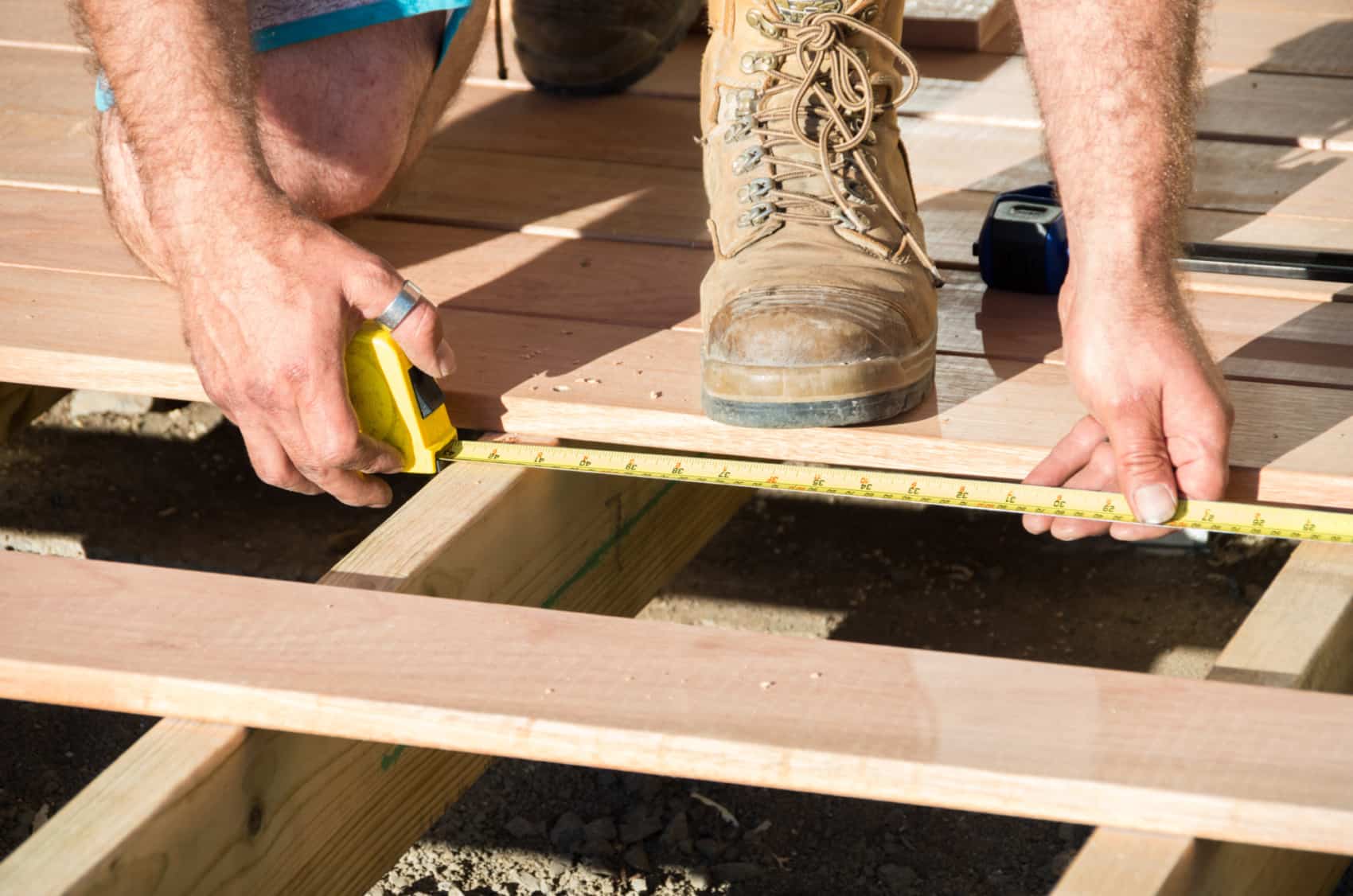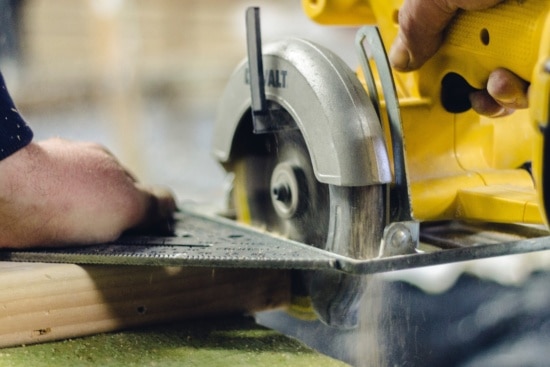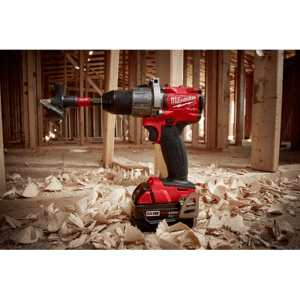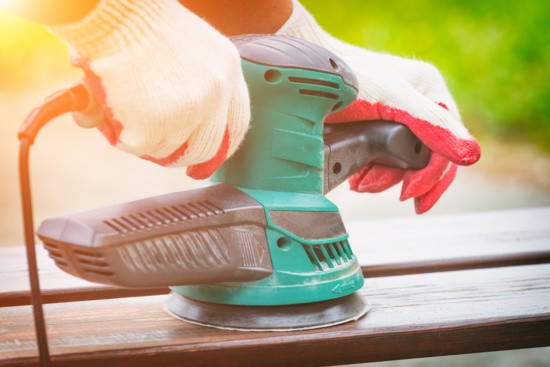
Must-Have Deck Building Tools for DIYers
You want to build your own deck, but where do you start?
Going the DIY route can save you hundreds or even thousands of dollars, but it can be quite an undertaking for the weekend warrior. Before you start buying materials, you need to make sure you have the right deck building tools on hand.
The tools in your garage now might get the job done, but they may not get the job done properly. Read on to learn the essential deck building tools we recommend to help your project go as smoothly as possible.
Tools for Planning Your Deck
Without a doubt, the most important part of the deck building process is the planning phase. Any structure that is not thoroughly planned can end up lopsided or dangerously unstable, so don’t even think about winging it! Make sure you’re using these measuring tools instead.
Measuring Tape
From start to finish, your measuring tape is going to be your best friend. Each board must be measured and marked before cutting, so make sure you have a quality tape measure you won’t mind using over and over again.
Marking Tools
You should never “eyeball” anything when you’re building a deck. Use a combination of spray paint, pencils, chalk lines, and masking tape to accurately mark your measurements. If you choose to use chalk lines, make sure you use white chalk to avoid staining your deck.
Carpenter’s Level
The last thing you want is to finish your deck only to find you’ve actually built a ramp. A carpenter’s level is a must-have tool to keep your boards straight as you build.
You don’t have to whip out the level every time you lay down a board. Instead, save yourself some time by tying strings to stakes across the frame of your deck at the needed level. Use the level tool to make sure the strings are straight, then use them as a guide.
Tools for Building Your Deck
Now that you have the proper tools to plan your deck, it’s time to get building. The following deck building tools will help you work more efficiently so that you can enjoy your new deck sooner rather than later.

Circular Saw or Miter Saw
When you’re building something as large as a deck, a hand saw alone just isn’t going to cut it (no pun intended). You’re going to be cutting a lot of boards, so you’ll need to invest in a quality circular saw or miter saw if you don’t already have one.
If you’re working with composite decking materials, these saws will work for that, too. There are even saw blades made specifically for cutting composite and PVC as cleanly as possible.
Jigsaw
For more detailed areas, such as the deck’s staircase railing, a cordless jigsaw will allow you to cut in tight spots with ease.

Power Drills
To make your deck a sturdy and safe place to entertain, you’re going to need several types of drills on hand.
The first is a mixing drill – these heavy-duty, high-torque tools are designed to thoroughly mix the concrete you need for your deck footings much faster than if you were to mix it by hand. A mixing drill also helps to prevent air pockets from forming and reducing the concrete’s strength.
While a mixing drill is an optional tool you can use to boost productivity, a cordless power drill is an absolute necessity. We recommend at least an 18- or 20-volt electric drill for maximum power and endurance. This versatile tool can be used to pre-drill holes for Ipe and other hardwoods, or drive screws directly into softwoods with ease.
Impact drivers are another popular choice for DIYers. Although they are not as versatile as power drills, their higher torque allows them to get the job done more quickly.
Hardware
Hardware – screws, nuts, bolts, and fasteners – will make up the smallest portion of your deck building budget, but that doesn’t make it any less important. You could choose the strongest hardwood or the most durable PVC decking material, but without quality hardware to match, your deck won’t be stable for long.
The right hardware will depend on how you build your deck and what materials you use, so here are some general tips to keep in mind.
- Don’t skimp! Spending a little extra on high-quality stainless steel fasteners and screws will ensure your hardware lasts the lifetime of your decking material.
- Make sure the screws you use are compatible with your deck boards. Pressure-treated lumber, for example, requires screws that are ACQ (Alkaline Copper Quaternary) compatible to prevent corrosion.
- Hidden fasteners are a popular installment option that leaves no visible screws on the deck’s surface. Our experts can help you choose the right type of fastening hardware for your specific decking material.
Tools for Finishing Your Deck
Last but not least, here are the deck building tools we recommend for smoothing, shaping, and finishing.
Random Orbital Sander
To prep your deck for staining and sealing, we recommend using a random orbital sander. Sanding your deck by hand is a time-intensive task, and heavy-duty sanders can do more harm than good if you aren’t careful. The user-friendly random orbital sander is the best way to get an even result in very little time.

Sandpaper
Choosing the right sandpaper is just as important as choosing the right sanding tool. A two-step approach will yield the best results. First, gently sand your deck with a coarse 60- or 80-grit sandpaper. On your second pass, use finer 100-grit sandpaper to create an extra-smooth finish.
Of course, the right sandpaper grit also depends on the type of wood you use. Talk to your decking supplier to find out which grit will work best for you.
Gathering up the right deck building tools and materials can be something of a chore, but Decks & Docks Lumber Co. makes it easier by having everything you need in one place. From hardware to lumber, we aim to be your one-stop supply shop. Visit your nearest Decks & Docks location or drop us a line to see if we have you need in stock!
- About the Author
- Latest Posts
Michelle has been with us for about 5 years now, sales at the Corporate Office. You can have them say something along the lines of how Michelle is positive and upbeat and makes sure to see our customers through on their jobs from start to finish. She is detail-oriented and acts almost like a Project Manager on the jobs to make sure everything goes smoothly.
